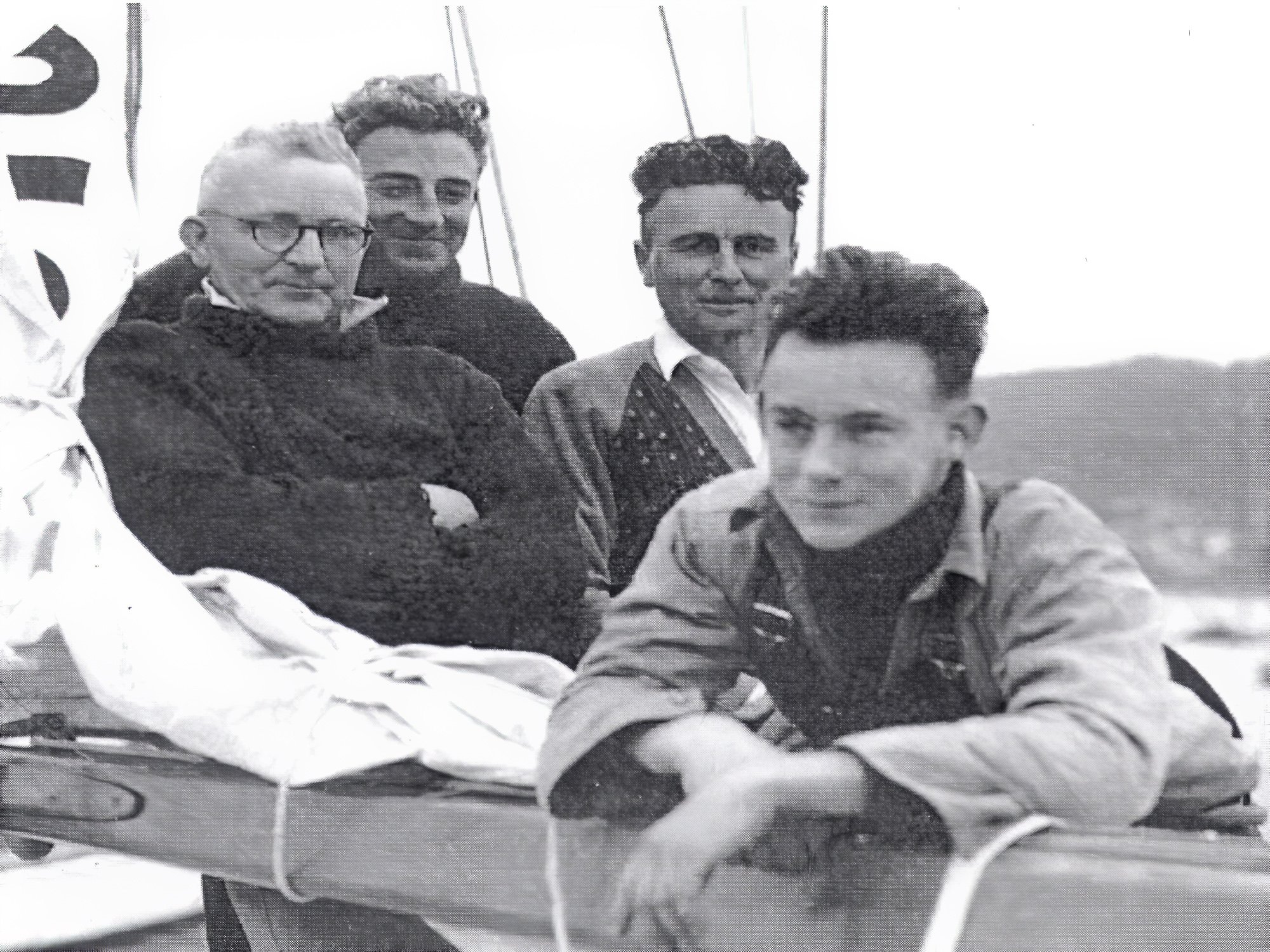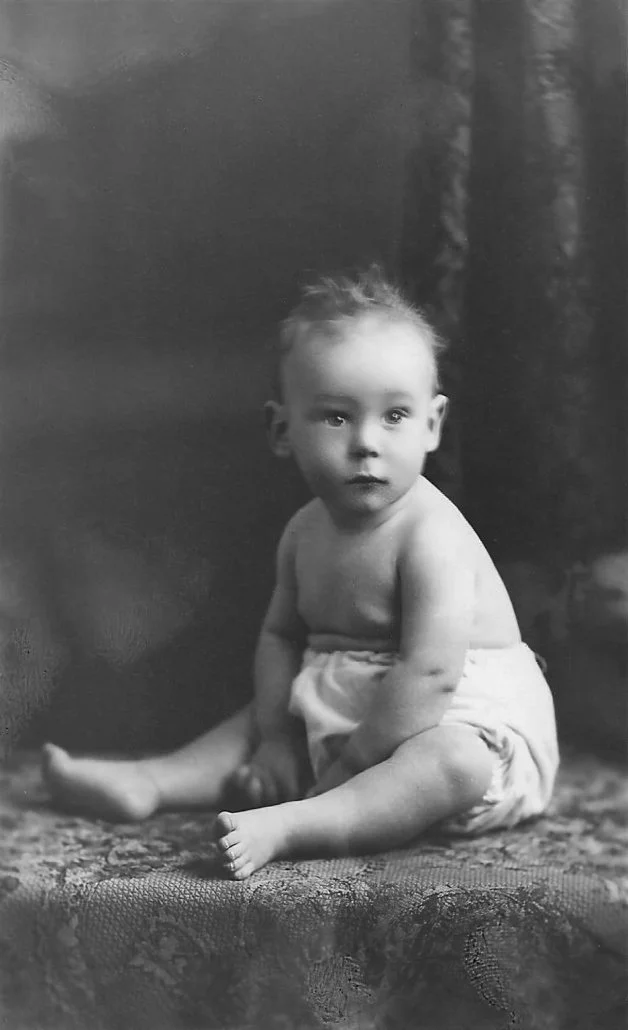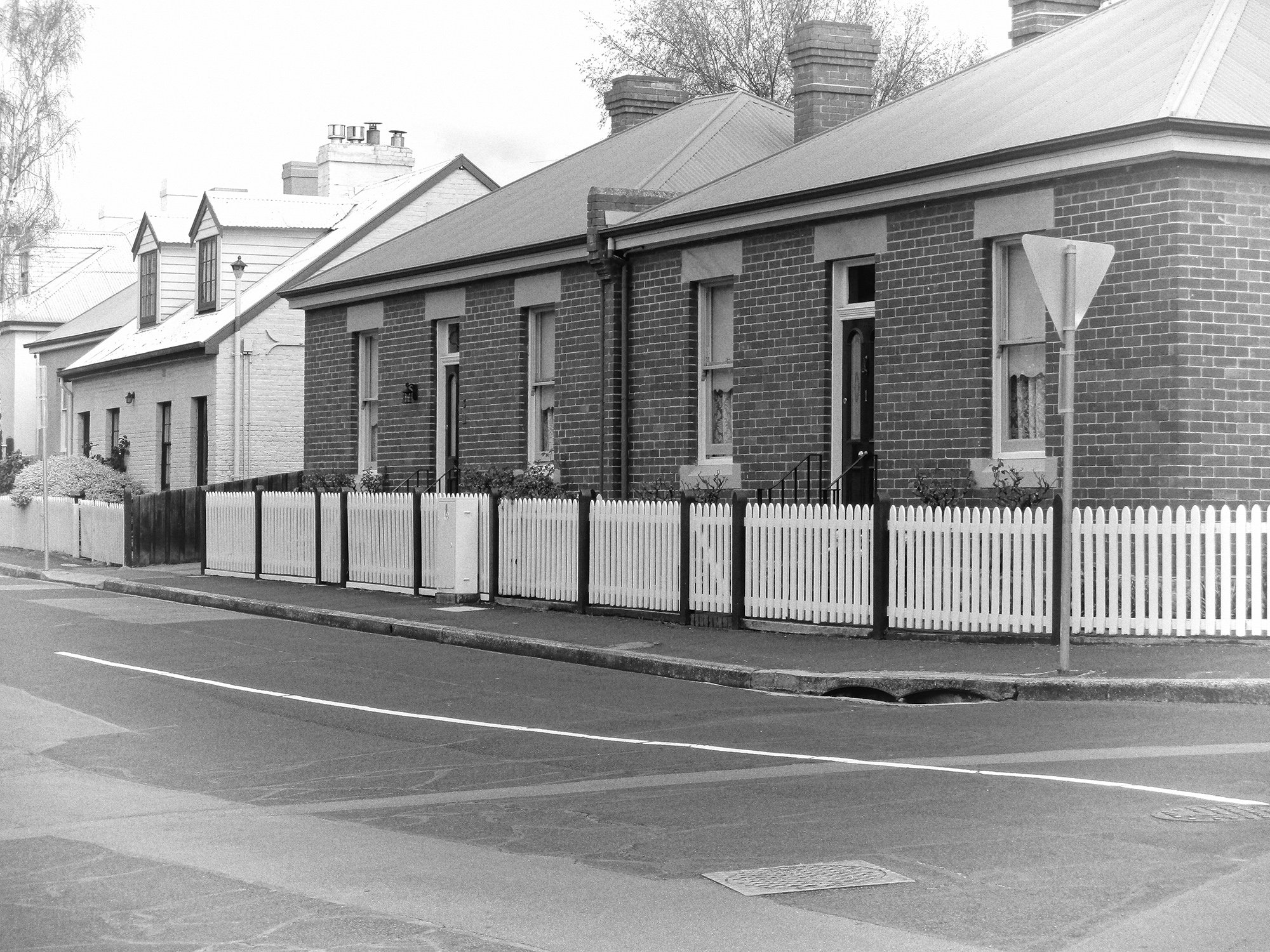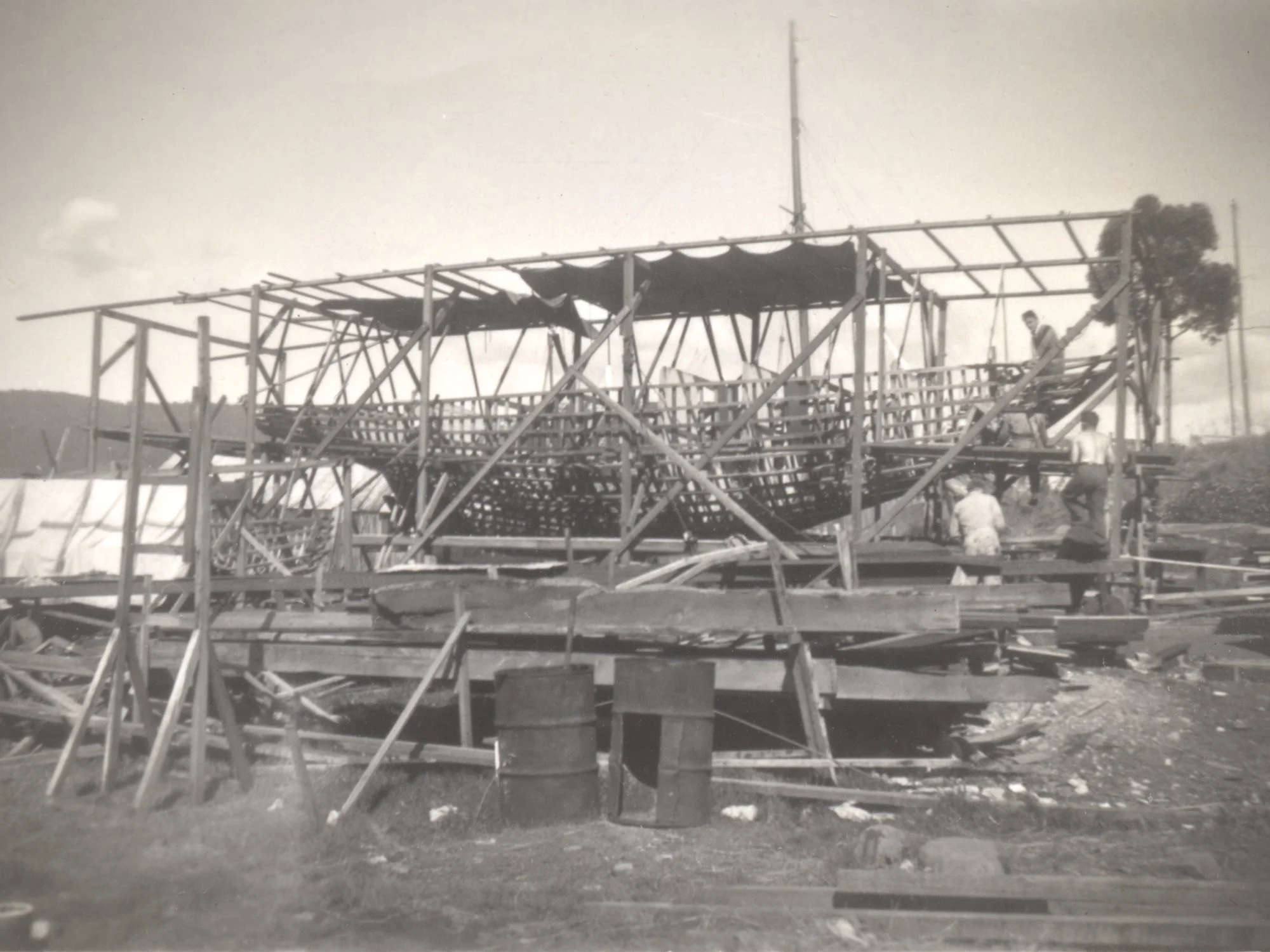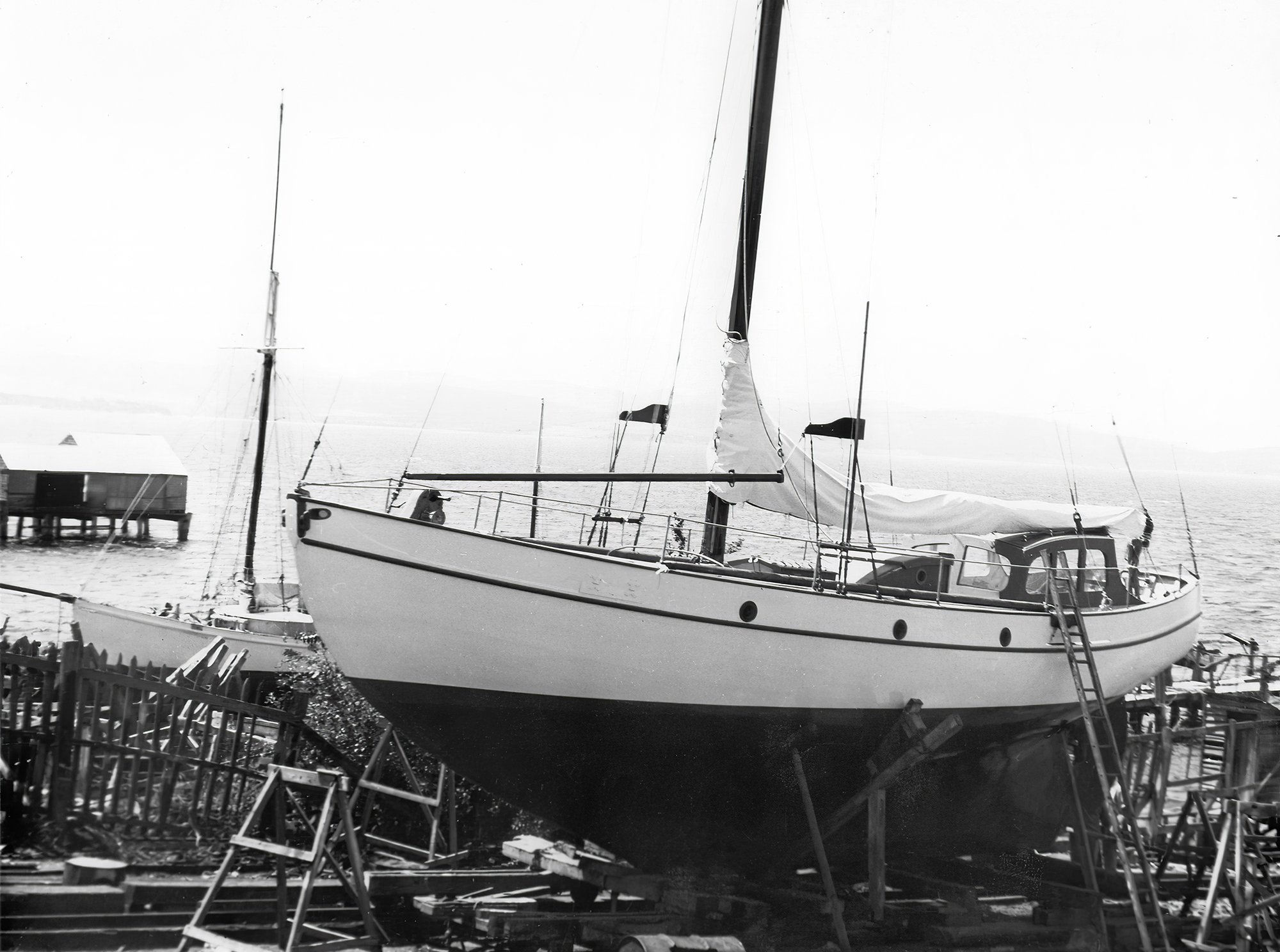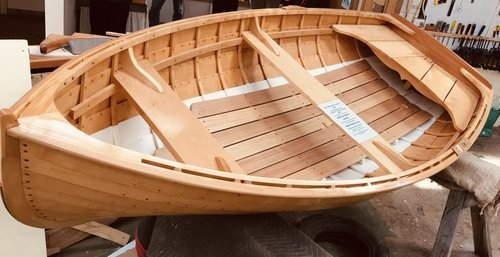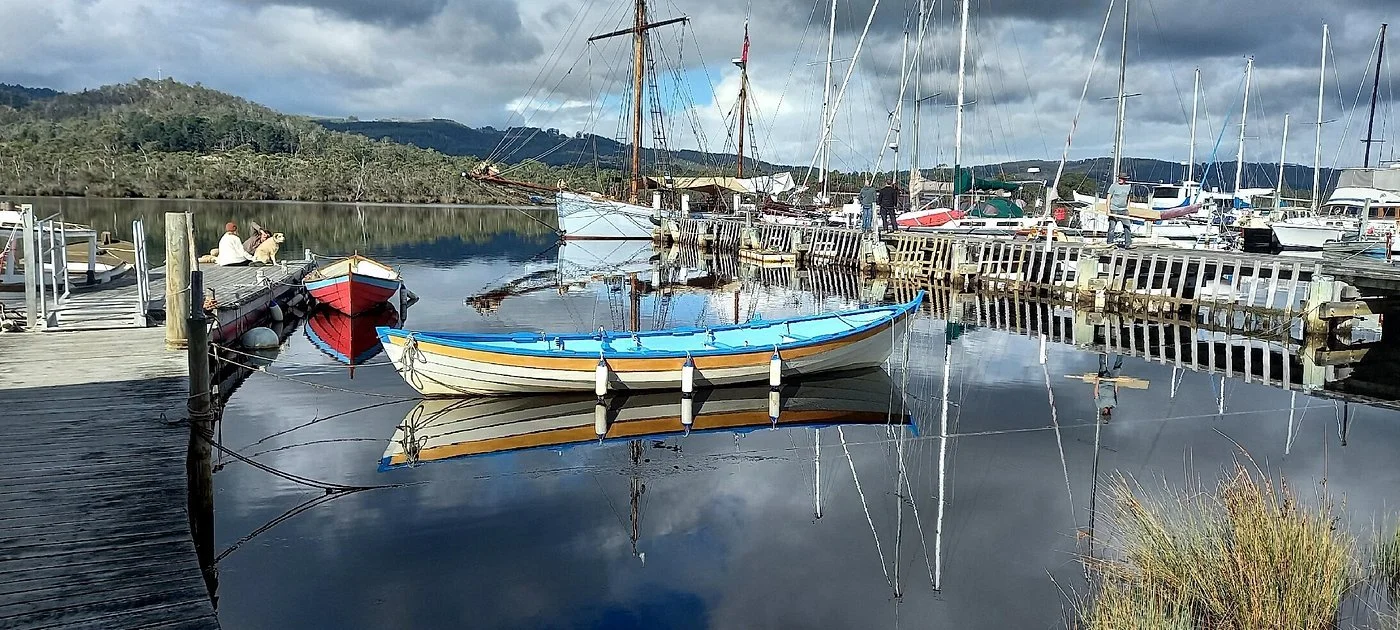Timber boat world mourns Hobart’s ‘Battery Point Kid’
By Sean Hogben
Master craftsman, mentor to many, Bill Foster brought artist’s eye to boatbuilding
Bill, leaning on the boom-Photo thanks to www.batterypointhall.org.au and Foster Family
Much-loved master wooden boat builder and life-long Battery Point resident William “Bill” Foster died on Friday February 3, aged 90, after suffering a stroke.
Far beyond the city village of early 20th century Battery Point and its cluster of boat and shipbuilding businesses, Bill brought to the world the pure joy of making high craft an art, ever since his early teens.
From modest beginnings, never lacking family love, Bill found in himself a deep and abiding fascination for working with wood, primarily in helping to create some of the most famous yachts ever built in Australia.
At age 12 Bill recognised in himself his natural skills and built the determination, perseverance and problem-solving abilities critical to a career as a boat builder.
He also had another great advantage. Aged just 14, he was invited by his uncle, Ernest Jack “Jock” Muir, to join what was to become the best-known marque in Australian yacht and boat building. Bill, as Jock’s first apprentice, was drenched in the culture, knowledge, art and craft of designing, building and sailing race-winning, strong and seaworthy boats, many of which are maritime jewels today.
Bill was born on August 6, 1932 in the Queen Alexandra Maternity Hospital in Battery Point.
Photo thanks to www.batterypointhall.org.au and Foster Family
His first homes were in rented houses in Colville St. Like many of the Battery Point families, the Foster household struggled through the Depression with very few means. His mother, a skilled machinist and seamstress, and his dad, a furniture upholsterer, worked tirelessly to raise their family. Frugality was the norm.
Number 5 Colville Street-Photo thanks to www.batterypointhall.org.au and Foster Family
Like Jock, Bill had his first schooling at Albeura Street State School. From those days forward Bill spent a great deal of time around the Napoleon St boat yards, especially Purdon and Featherstone where his uncle Dave McAllister worked, and Perce Coverdale’s yard nearby.
Napoleon St boat yards-Photo thanks to www.batterypointhall.org.au and Foster Family
All the McAllister men were skilled craftsmen and Bill watched them closely, and he had many friends among their and the neighbourhood children. Such was the closeness of the Battery Point community. By Year 6 Bill was spending every Thursday at the Hobart woodworking school in Sandy Bay, for which he has been selected. Bill wrote it was these classes he enjoyed most as he learned design, drafting and executing models. He kept a stool he made there all his life.
Hobart Junior Technical School in the city followed before Bill received his invitation from Jock Muir in 1946 to join the men building a large yacht on a lot in Sandy Bay. The yacht was Westward, winner of the 1947 and 1948 Sydney to Hobart Yacht Race - the only yacht to win the race with a wet well, albeit plugged up.
WESTWARD Photo thanks to www.batterypointhall.org.au and Foster Family
A sport fisherman for a local family followed, then Waltzing Matilda, another Sydney-Hobart race winner, was started. Work began to flow into Muir’s, which by then had been moved to Napoleon St in Battery Point, where it still is today. Bill described moving the spine and moulds for Waltzing Matilda to a vacant maritime board lot in Napoleon St and setting up again, much to the surprise of Mr Coverdale, who saw an empty yard one day and an apparently well-advanced yacht the next.
WALTZING MATILDA leaving Sydney Harbour
An urgent request to build the Robert Clark-designed Lass of Luss intervened, with a Sydney-Hobart deadline. The yard pivoted to the new order and Bill learned from these early days just how important flexibility was to both business and customer.
The Robert Clark designed LASS O’LUSS (left)
Jock, an accomplished sailor (as was his seaman father) from childhood, built and sailed these yachts and frequently Bill was in the crew. He often said much could be learned from sailing a new build and he saw sailing as a key part of his skill set.
Heading north for the 1948 Sydney - Hobart race, off cape Pillar, Tasman Island. Photo Bill Foster
He did deliveries to Sydney with Jock, bailing out the just finished Mavis with a tea cup as she took a little water crossing Bass Strait. He was so happy to have made Eden he jumped overboard for a swim, then scrambled out quickly when Jock warned him the harbour was full of sharks.
A string of great yachts followed - Patsy of Island Bay, a Laurent Giles design, Wild Wave, Lahara, and Bill’s last boat in this stint with Muir’s, Van Diemen. Bill said I should visit this boat, built for Len Nettlefold alongside Patsy, where she was currently at Palm Beach in Sydney. “Look at the forward hatch where I put a long series drill bit through the side. Had to put a long graving piece in there”. The repair was still there, tight and neat as a pin, 47 years later.
In 1952 aged 20, Bill continued his boatbuilding career in Penguin in north west Tasmania where he also worked as a carpenter. It was there he met his beloved wife Shirley Aitken. They married on June 9, 1956.
However, work was unreliable so Bill and Shirley moved to Ulverstone where they had bought a house. Bill built fishing boats, dinghies and a speedboat at Devonport as well as working as a carpenter and joiner.
In 1958 the Fosters moved their family to Victoria where Bill managed a boat yard in Hastings, before moving again to Savages in Williamstown in Melbourne, where Bill became the foreman. Two recent arrivals at Savages from the famous firm of Abeking and Rasmussen in Lemwerder, Germany, were the young Runow brothers. Bill regarded Dieter Runow, founder of D&R Shipwrights at the CYCA in Rushcutter’s Bay, Sydney, highly. When I sought work from Dieter in 1997 at Bill’s suggestion, having told him Bill taught me most of what I know about boatbuilding, Dieter hired me on the spot.
The growing Foster family moved back to Tasmania in 1962 and Colville St where they pitched up with Bill’s parents. Jock hired him immediately to build a police boat, the Alert, in Lenah Valley because there was no room at Napoleon St. Bill took with him an apprentice, Jock’s son Ross, completing the circle by learning directly from another master, Bill Foster.
“Dad said every boat builder is an artist,” says Ross. “Bill certainly was. He was a cut above the rest.” Ross added that Bill’s philosophy on boatbuilding was “that there is no right way or wrong way, just different ways. That’s how he was with me”.
It was a heady time at Muir’s. Bill was joined by a second apprentice, Adrian Dean (recently deceased). Also aboard was Dave Wardrup, forming a core of highly skilled workers with a more than prosaic view of their craft. Excellence was the minimum standard.
Bill then took a five year lease on Perce Coverdale’s yard nearby after his death. Bill described the Coverdale yard as facing south, bitterly cold but right in the heart of his old territory. Home again.
Five years of hard slog showed Bill there were diminishing rewards in running a boat yard. So in 1968, to ensure the financial security of his growing family, he took a job at the Tasmania Stevedoring Company. The big trade was fruit to the United Kingdom, and Bill oversaw the loading of ships, so the apples arrived in good condition. Another critical skill, how to load a boat.
Britain’s entry into the Common Market saw a plunge in fresh fruit shipping from Tasmania in a body blow to its economy. Fortunately, Bill was offered a job by the Tasmania Grain Elevators Board, where he worked as an executive for the next 20 years.
A community-minded man, Bill, always a Battery Point resident, was active with the Sandy Bay Sailing Club, Apex and Lions. He taught his daughters to sail and built Helen a beautiful dinghy for her 21st birthday, the first Foster 10. There are now some 35 Foster 10s extant, and they are highly prized, being the epitome of fast, light, steady and durable clinker sailing boats.
A Clinker Foster-10
Bill knew well how rich was his experience, especially with Muir’s, and he saw it as critical these skills were not lost. It was with this motivation he began his association with John and Ruth Young, founders of the Shipwright’s Point School of Wooden Boat Building in Franklin, Tasmania. Both academics, the Youngs knew how to guide the modern student, rather than teach them. It was a tremendously successful association.
The Youngs had taken over Athol Walter’s shed at Shipwrights Point at Port Huon, where an export wharf existed. They taught dinghy building courses while searching out the cream of southern Tasmania’s boatbuilders and associated tradesmen. Bill Foster was their number one pick to lead Australia’s only nationally-accredited, Level 5 training course in traditional timber boat building.
Also aboard for the inaugural two year Diploma course was recently retired Adrian Dean, from Margate. There were metallurgical experts, engine and systems instructors from the maritime college in Launceston, a lifelong sailmaker; the collection of boat building talent was spectacular.
With Bill’s delightful encouragement we got to work on a project-based course that produced a work boat, two Foster 10s rigged for sail and the Lady Franklin, the 30ft H.E.Cox cruising sloop a sister ship to MAORI LASS. A four year apprenticeship poured into two years of 50 hour weeks, with critical subjects such as business management included.
The Waterfront at Franklin
The cherry on top was learning directly, in a lineal fashion, from those who learned the same way from their elders, going all the way back to the Phoenicians. We learned the Muir way.
This was a priceless gift from John and Ruth Young, Bill and his cohort. The sailmaker told us: “You don’t know how lucky you are. Most tradesmen in my day wouldn’t give up trade secrets. These fellas are giving you everything.”
Such was the generosity, inclusiveness, dedication and wisdom of William Frederick “Bill” Foster.
Bill also had a keen interest in Tasmania’s maritime history. The highlight of his late-life projects was the painstaking eight year restoration of southern Tasmania’s most famous trading ketch, the “barge” May Queen, which plied the waters south of Hobart carrying goods to and from remote communities for 105 years since her launch in Franklin in 1867. Bill was awarded an Order of Australia medal for his guidance in keeping alive Australia’s oldest surviving trading vessel.
The Foster ethos lives on in his daughters Vicki, Susan, Helen, Karen and Jayne. There are 16 grand children and three great grandchildren, of whom Bill and Shirley were righteously proud.

